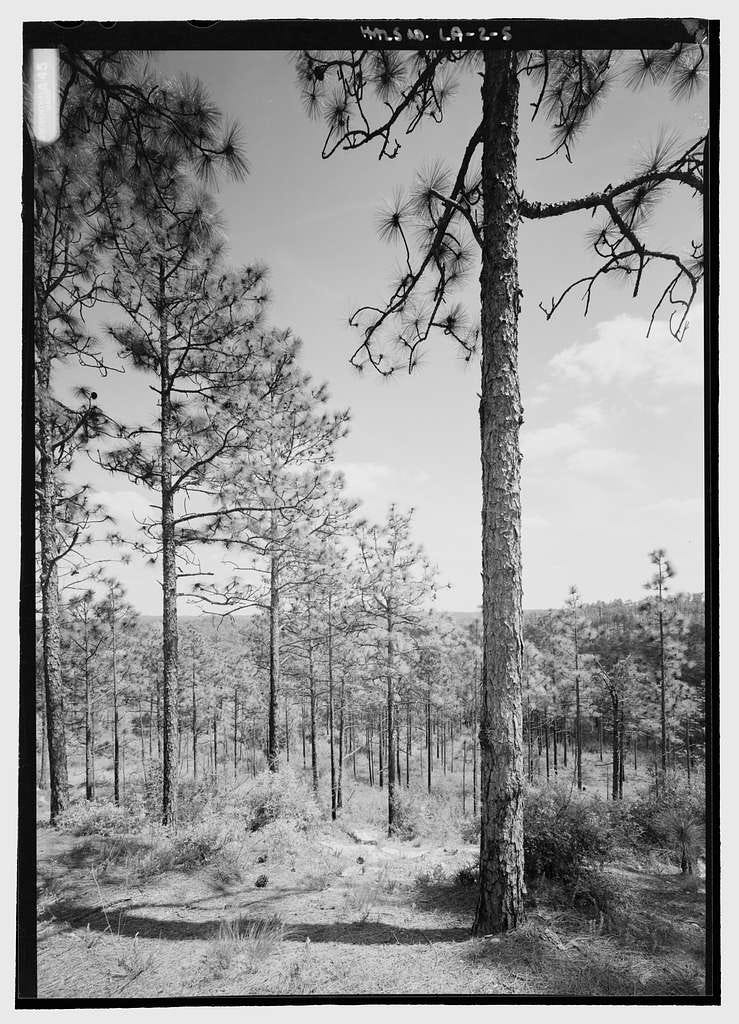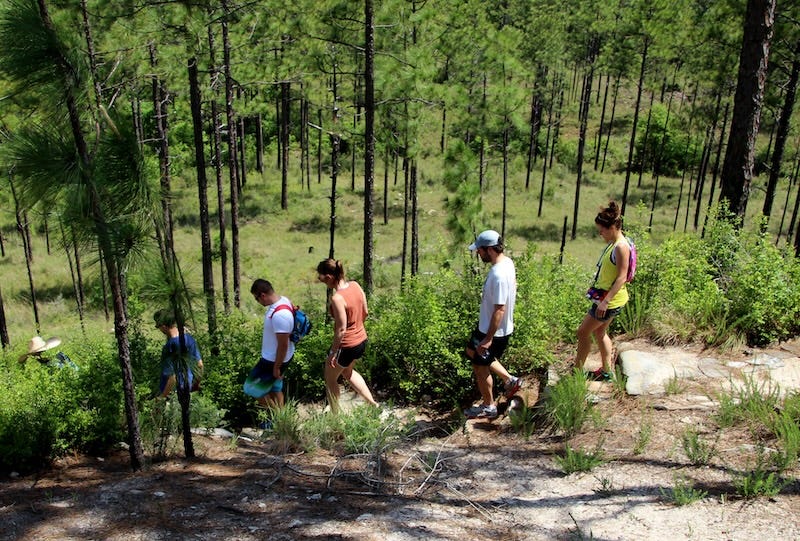Picture a tree in Louisiana. Perhaps I’ve ruined the effect by splashing a pine above, but in more innocent circumstances, I’d wager you’d conjure a cypress. It’s a good choice; Louisiana certainly features some magnificent examples. But, at least by acreage, the most Louisiana of trees is—or at least was—the pine, the longleaf especially. Once millions of acres of pine forest spread across the state. In a short span of decades, they were razed.
The trouble was partly the arrival of railroads, in the 1880s, which suddenly made Louisiana’s timber accessible. Of course, you could also say the problem was shortsighted greed—a desire to make money without considering the consequences. Louisiana quickly became, as one U.S. Forest Service report has put it, “a blackened stump-waste.”
Thankfully, at least some of those longleafs have come back—especially within Louisiana'’s sole national forest, Kisatchie.
The first national forests were established out west, on tracts of land that had never been offloaded from the public domain. In the east, meanwhile, the existence of national forests was controversial. Why empower the federal government to buy up land? Couldn’t landowners just take care of privately held land?
The stumpy wastelands marking former forests—in Louisiana, yes, as well as elsewhere across the country, offered an answer. An indictment, too, of the worst consequences of a ransack economy. The federal government began to buy up land for new forests in 1911; Kisatchie was established in 1930 precisely because the forests were so thoroughly clearcut that no one else wanted to purchase the land.
Today, almost a century later, this public forest is a rare natural paradise in Louisiana: rolling, forested hills, some of them officially designated as wilderness. You can (and should) backpack and camp and paddle the creeks.
I wanted to highlight Kistachie because our new president has a plan to “log, baby, log.” Timber production is not an inherently bad thing, and there’s been misinformation circling suggesting that Trump plans to clearcut essentially every acre of national forest—an outcome I consider unlikely. It’s not clear yet what this administration will do, but we can’t forget that careful federal stewardship matters deeply: It creates a paradise like Kisatchie.
—Boyce
About those public lands
>>> USA Today has a breakdown of both why more logging might not be as good as Trump claims—and why it may be hard to pull off, anyway.
>>> And, following up on the previous newsletter, a judge has ordered the Trump administration to rehire fired workers, and not just at public land agencies—though it’s not clear that those agencies are following that directive.
>>> The New Yorker has a good essay on what this all means for the Helene-ravaged forests of North Carolina in particular; the New York Times, meanwhile, has a useful breakdown of the different agencies involved.
>>> To keep up on the latest moves, I recommend subscribing to Wes Siler’s Newsletter and to Public Domain.
Reading material
If there’s a lot of reason to despair right now, there is at least one small happiness: the past couple of weeks have included a cornucopia of longreads on Southern nature. Pour some coffee—or mix up a stiff drink—and settle down to read Lindsey Liles’ feature in the new Garden & Gun about red wolves. And then Doug Bock Clark’s dispatch, for the New York Times Magazine, from the 2024 national adventure racing championship—which was held in the forests of West Virginia amid Hurricane Helene. And then enjoy Ryan Krogh in Texas Monthly on the pricey practice of pursuing big bass on private lakes. And then stick around in Texas for my bud Wes Ferguson’s look at the artists inspired by its coastal bayous.
A few weeks back, I bemoaned the fading-away of Outside—but, hey, at least the South is still serving up plenty of inspiration.

The lowdown
Wildfires have long been viewed as a Western issue—but they’re increasingly becoming a problem in the South. // The Georgia legislator has, once again, failed to pass laws to protect Okefenokee from mining. // Ducks—whose resurgence a hundred years is one of the world’s great conservation stories—are in decline again.







Great article, and will definitely be reading the garden and gun one